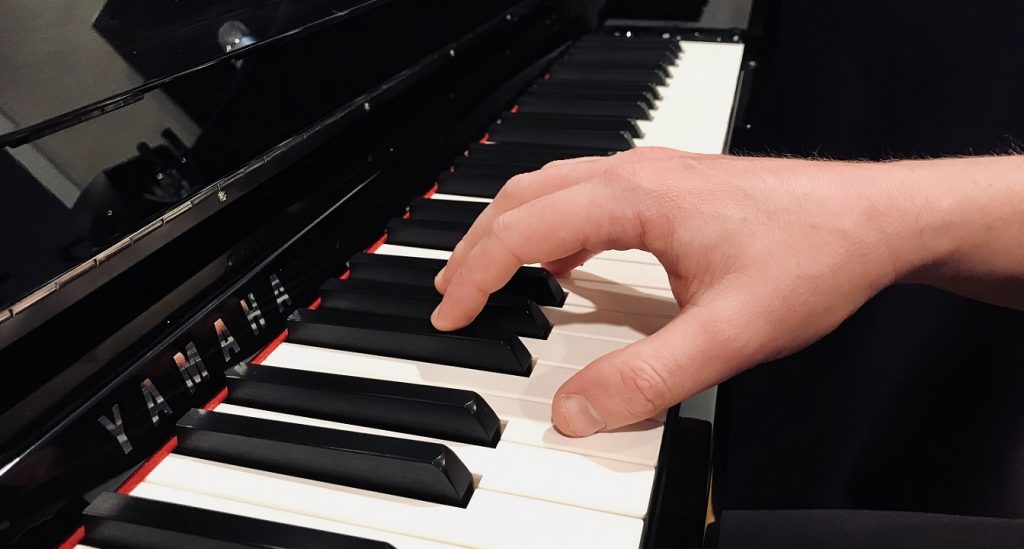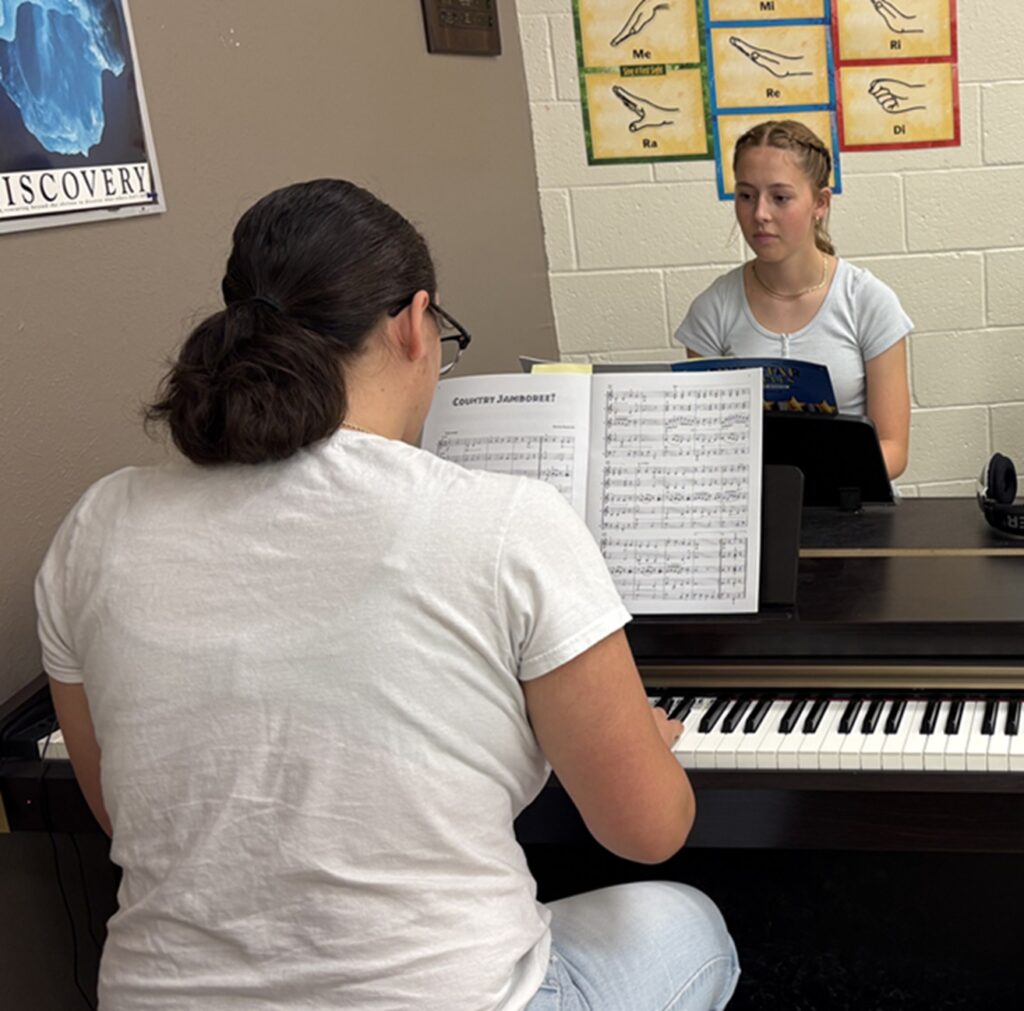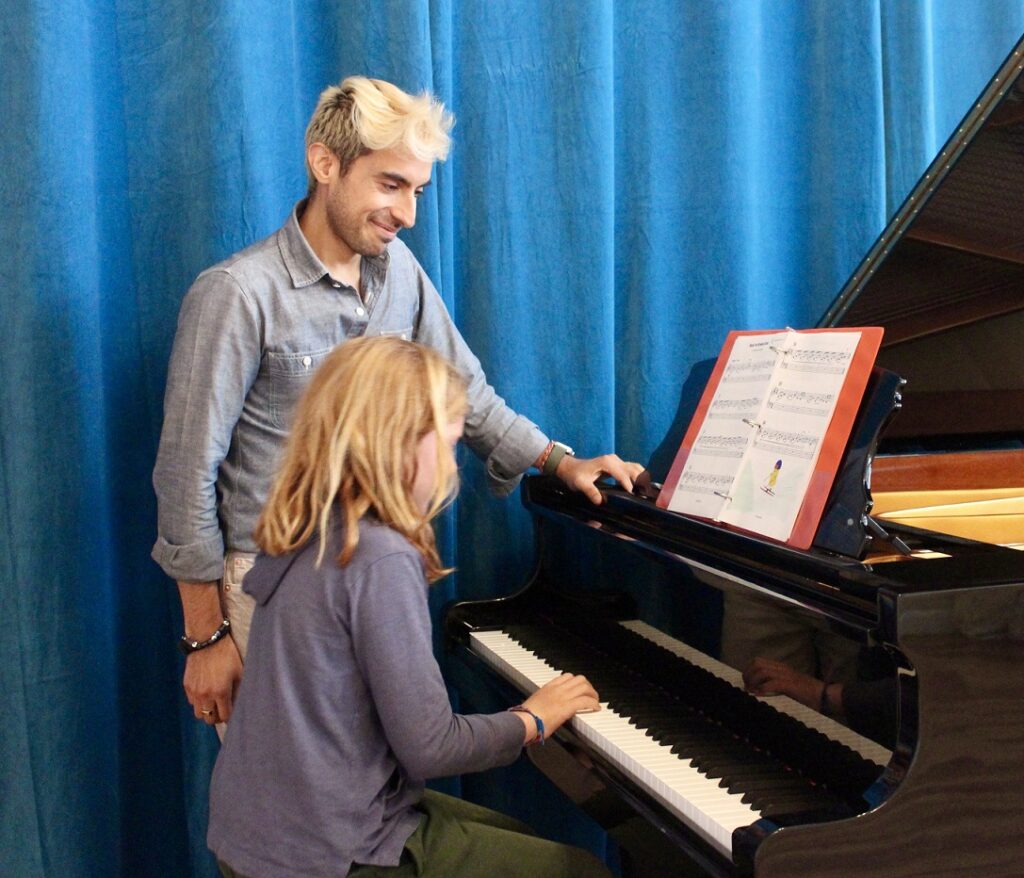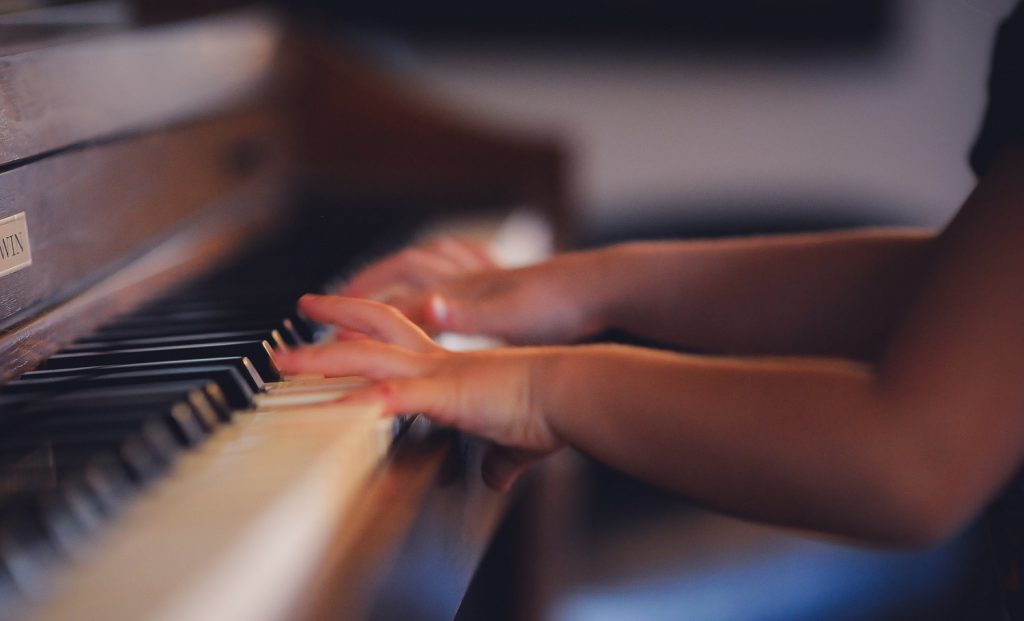Tagged Under:
Fix It: Tips for Teaching Basic Piano Technique
Try these expert tips to fix common errors that piano students make.
Piano students often say, “My technique isn’t good enough” or “I really want to play this piece, but it’s too hard, and I feel really tight and tense.” These insecurities are often the result of not establishing healthy habits at the piano. These issues should be addressed from their very first lessons so that students can achieve their playing potential.
In this article, I’ll address common errors seen in basic piano technique and how we, as teachers, can help our students.
THE YAMAHA EDUCATOR NEWSLETTER: Join to receive a round-up of our latest articles and programs!
Fix It: Unbalanced Posture
New pianists often don’t think about the way they sit at the piano. This is particularly an issue for young children who are still growing and need to sit higher and closer to the instrument. Older children and young teenagers may experience sudden growth spurts and must adjust their sitting position from week to week.
Another common error is not keeping one’s feet flat on the ground. This can be tricky for young students whose legs aren’t long enough yet. Instilling good habits for balanced posture is the first step toward good technique, a comfortable position at the piano and continued interest in playing. So how do we fix posture?
- Solution — There are four main components to good posture:
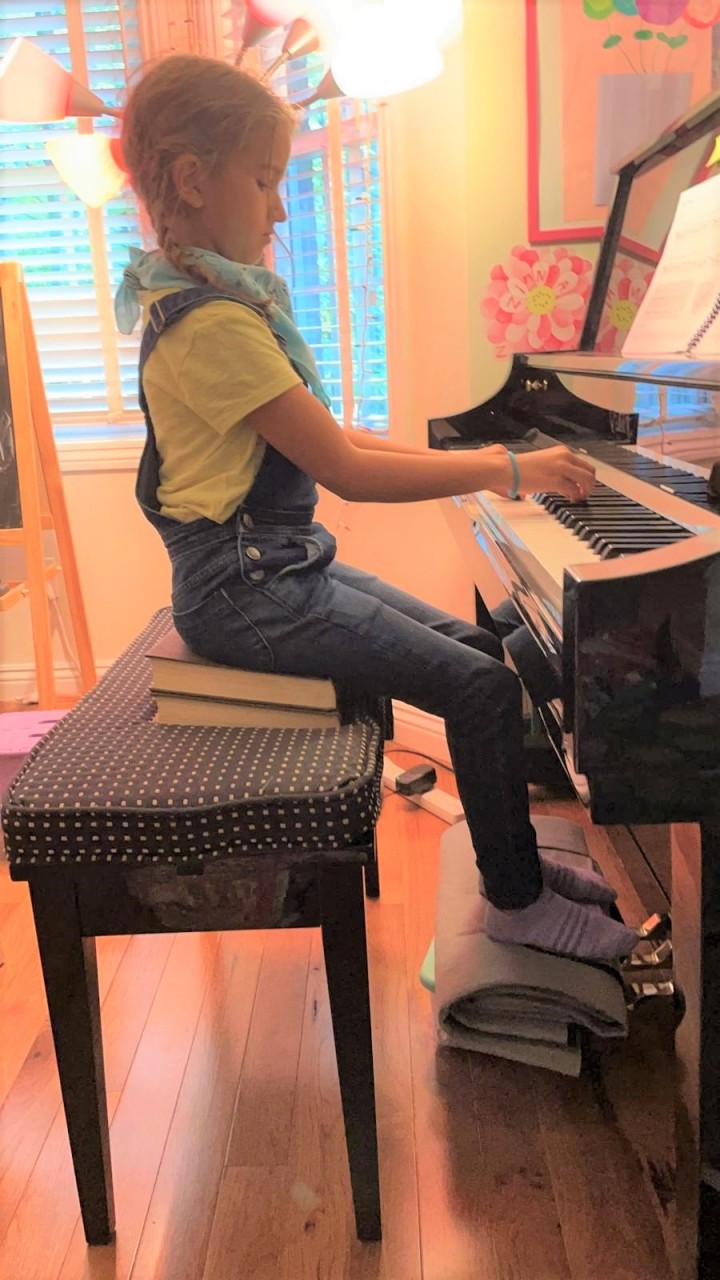 Height of the Bench: It’s important to be like Goldilocks — the bench height can’t be too high or too low. It must be just right. Generally, when someone is sitting at the piano, the arms should be about parallel to the ground, and the angle of the arms at the elbow should be about 100 degrees. I say “about” because there will be slight variations for each person. If you don’t have an adjustable bench and your student needs to sit higher, grab some books or any other type of hard surface. I keep foam squares readily available in my studio so that I can customize the height for each student.
Height of the Bench: It’s important to be like Goldilocks — the bench height can’t be too high or too low. It must be just right. Generally, when someone is sitting at the piano, the arms should be about parallel to the ground, and the angle of the arms at the elbow should be about 100 degrees. I say “about” because there will be slight variations for each person. If you don’t have an adjustable bench and your student needs to sit higher, grab some books or any other type of hard surface. I keep foam squares readily available in my studio so that I can customize the height for each student.- Distance of the Bench from the Piano: Again, just like Goldilocks, you can’t sit too far or too close to the piano. Students should learn to be sensitive to this distance (along with the height of the bench) so they can make adjustments as they grow. Keep in mind that the angle of the arms, as mentioned earlier, should be about 100 degrees. It’s also important to sit on the front half of the bench.
- Sitting Up Tall: In order to have full freedom and use of the whole body while playing, it’s important to sit up tall at the piano. The back shouldn’t be overarched but the student shouldn’t be slouching either. Ask students to pretend a puppet string is holding them at the top of their head.
- Keeping Feet Flat: If a student’s legs are long enough, the feet should rest comfortably and flat on the ground. If the legs are dangling, find something to prop under the student’s feet to keep them flat. A step stool or some type of sturdy support will do. Alternatively, a few foam squares will also create the right adjustment
Fix It: Tension in Arms
When people start learning to play the piano, it is often tricky to find a sense of release in their arms. This will easily hamper one’s ability to play with ease.
- Solution — To help acquire this sensation, I like to do something I call the “floppy arm exercise.” Try it for yourself!
- Extend your arm out and have your friend to hold it. Let go of all control of your arm so that your friend is bearing all the weight. Check to make sure you’re not holding any weight in your upper arm either. Your arm should look or feel like that of a rag doll. One young student told me it felt like she had no bones. If you’re doing it correctly, your arm should fall like a dead weight once your friend removes the hand supporting your arm. If you’re not doing it correctly, your arm will remain in the air once your friend removes the support OR your arm will slightly hesitate before it “realizes” it needs to fall back down. Watch this video of the “floppy arm exercise.”
- Another way to gain this feeling is by using a headband or some other type of elastic. Allow your wrist to hang in the headband. Move the headband up and down and from side to side. Your hand and arm should be dangling. Do this with the other arm too in order to capture the feeling on both sides.
Once you’re able to acquire this feeling yourself, you can help your students to gain the same feeling of release.
Fix It: Inconsistent Hand Shape
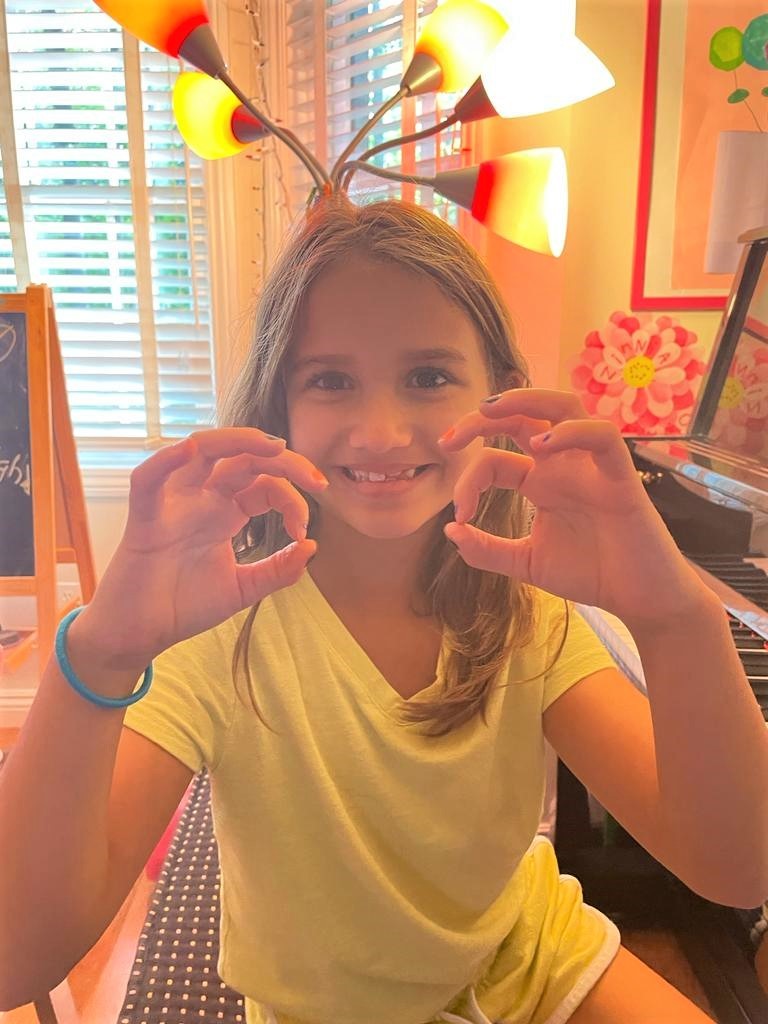 Students often will play with overly flat fingers, collapsed joints and collapsed knuckles. Playing with a compromised hand position will lead to injury and prevent students from reaching their potential. It is important to understand the key aspects of good hand position when playing the piano.
Students often will play with overly flat fingers, collapsed joints and collapsed knuckles. Playing with a compromised hand position will lead to injury and prevent students from reaching their potential. It is important to understand the key aspects of good hand position when playing the piano.
- Solution — There are three aspects to be aware of:
- The bridge of the hand must be round and supported. To keep the bridge, which is around the knuckles, from collapsing, ask students to hold a small ball or imagine their hand holding a bubble or an egg. I use a small dolphin toy to help my students understand the shape of the hand.
- The fingertips must be firm, and the joints have to avoid collapsing. To help strengthen the joints, have students make O shapes with each finger connecting to the thumb (see top photo to the right). Frequent reminders will also help. At the piano, you can also assist students to understand the feeling of playing with joints that don’t collapse.
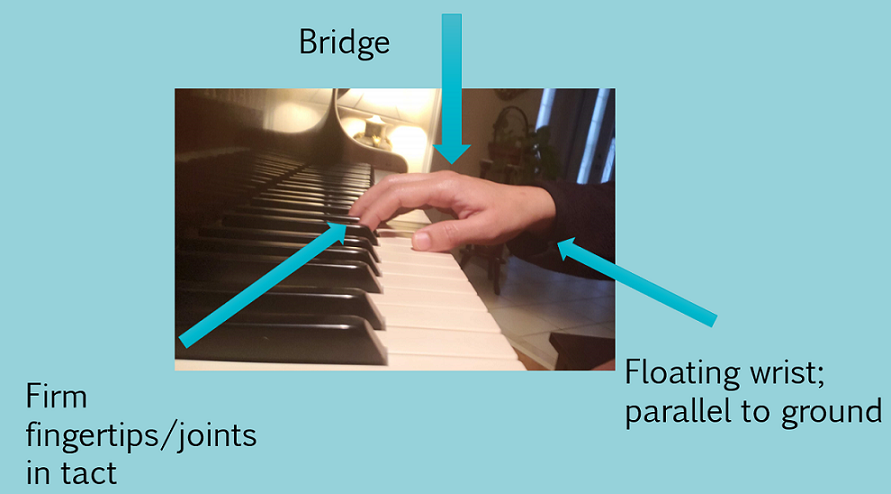 The wrist should be flexible and supple with a floating sensation. It will definitely move around depending on what the student is playing. However, the wrist should always come back to a neutral position, which is generally parallel to the ground (see bottom photo to the right). Once the bridge of the hand and finger joints have strengthened, students can practice maintaining their hand position while moving the wrist in circles. They won’t be doing this motion while playing the piano, but it will help them to understand the range of motion.
The wrist should be flexible and supple with a floating sensation. It will definitely move around depending on what the student is playing. However, the wrist should always come back to a neutral position, which is generally parallel to the ground (see bottom photo to the right). Once the bridge of the hand and finger joints have strengthened, students can practice maintaining their hand position while moving the wrist in circles. They won’t be doing this motion while playing the piano, but it will help them to understand the range of motion.
By addressing these important physical aspects early on in lessons, you’ll be setting up your students for success. They’ll be able to play progressively more difficult music, and they’ll feel physically comfortable doing it. It will help to keep them interested in playing piano for years to come!












